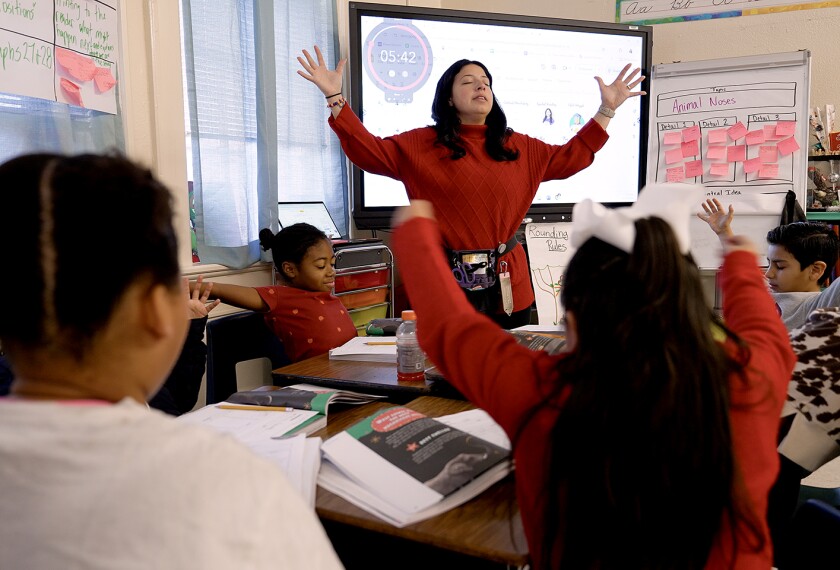As schools work to reverse spiking rates of student absences, the most recent data from states suggest that they made some progress in the most recent school year—but not enough to return attendance to pre-pandemic levels.
The uphill climb to learning recovery is made steeper when students consistently fail to show up.
Fifteen states have reported data on chronic absenteeism for the 2022-23 school year, according to a tracker maintained by FutureEd, a think tank at Georgetown University. States use varying metrics to measure chronic absenteeism, though most define it as the amount of students who missed 10 percent or more of school days, even for excused reasons like illness.
A majority of those 15 states saw rates of chronic absenteeism drop five percentage points or fewer between the 2021-22 and 2022-23 school years. Even Michigan—the state with the most dramatic decline, from 38.5 percent to 30.8 percent—did not see its rates return to the pre-pandemic levels measured in the 2018-19 school year, when 19.7 percent of students in that state were chronically absent.
One state, Louisiana, saw its chronic absenteeism rate grow—from 19.4 percent in 2021-22 to 23.3 percent in 2022-23.
As researchers await updated national data on absences, preliminary state totals confirm that much more work is needed to help schools turn the tide on the crisis, said Hedy Chang, the executive director of Attendance Works, an organization that promotes tracking and responding to data about student attendance.
“This challenge has deepened and affected more schools” since the pandemic, she said. “We need systemic approaches to address it that are built into how schools operate.”
In a related analysis released this month, Attendance Works found 11 states had a combined 2022-23 absenteeism rate of 27.8 percent, down from 30 percent the previous year.
Nationwide, 29.7 percent of students, or nearly 14.7 million, were chronically absent in the 2021-22 school year, the latest federal data show. Attendance Works’ analysis also found that more elementary schools and middle schools were affected by high rates of absenteeism than before the pandemic, suggesting the need for new interventions.
In recent years, schools have built up their strategies to encourage attendance through programs like home visiting, on-site counseling, mentoring, and better communications with families and caregivers.
“Chronic absenteeism often signals that students are experiencing untreated health needs, transportation problems, mental health issues, or other grave challenges,” FutureEd says in its analysis.
The organization also published a “playbook” in May that compiles research on the effectiveness of attendance strategies, including installing laundry machines in schools, sending “nudge” texts to parents that remind them of their children’s attendance patterns, and using telehealth programs to treat common health issues and offer counseling on-site.








